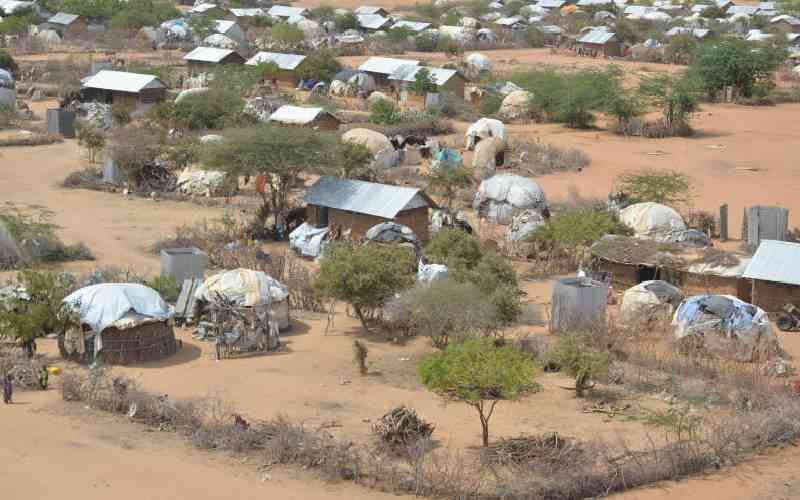For more than three decades, Dadaab in Garissa County has been home to hundreds of thousands of refugees fleeing conflict in East Africa. While offering safety, the influx has strained the region’s fragile ecosystem, pushing it toward an environmental breaking point.
Originally an expansive wooded arid land, Dadaab is now experiencing severe deforestation, illegal logging, charcoal burning, and wildlife poaching. Over 210 hectares of forest are cleared monthly, while only a fraction is restored through reforestation efforts. This loss affects grazing land, traditional medicine sources, and vital habitats for local wildlife.
The area hosts over 426,000 refugees nearly half of the county’s population who rely heavily on firewood for cooking. With 92% using traditional three-stone fireplaces, biomass consumption exceeds 177,000 metric tons annually. Such demand accelerates forest depletion and worsens climate stress in an already arid landscape.
Water scarcity compounds the crisis. Boreholes are being drilled deeper as the water table drops, but droughts persist, forcing wildlife into human settlements in search of resources. Habitat loss has led to increased poaching of species like the near-threatened Gerenuk and giraffes, whose populations are declining sharply. Smaller antelopes such as dik-diks are hunted for meat and skin, further eroding biodiversity.
Wildlife displacement has triggered more frequent attacks by predators lions, leopards, hyenas on livestock, a primary livelihood for the host community. While compensation exists, it is often delayed, leaving pastoralists vulnerable. Climate extremes exacerbate the situation, with alternating droughts and floods destroying crops, pasture, and infrastructure in both the camps and surrounding villages.
Efforts to address the problem include hybrid solar-diesel power systems for some refugees, tree planting initiatives, and a national giraffe recovery plan. However, these measures are insufficient compared to the scale of deforestation and habitat loss.
The crisis is not solely driven by refugees; overgrazing by local livestock, lack of sustainable energy access, and unpredictable weather patterns all contribute. Without coordinated action, Dadaab risks losing its remaining natural resources, leaving both human and wildlife populations in jeopardy.
As environmental degradation accelerates, the region faces a stark choice: develop comprehensive, collaborative solutions that balance humanitarian needs with ecological preservation, or watch as its fragile ecosystem collapses. The battle for Dadaab’s survival is now a battle for the survival of all who depend on its land and water.

